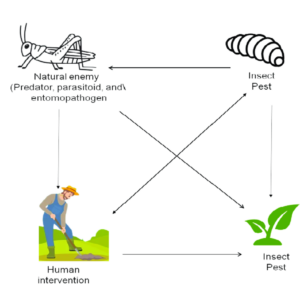About Lesson
Introduction to Organic Farming Methods:
-
- Principles of Organic Farming: Organic farming emphasizes the use of natural inputs and sustainable practices to cultivate crops. It avoids synthetic pesticides and fertilizers, focusing on maintaining soil health, biodiversity, and ecological balance.
- Crop Diversity: Organic farmers often employ diverse crop rotations and intercropping strategies to reduce the risk of pest outbreaks. This diversity disrupts the lifecycle of pests and encourages the presence of beneficial organisms.
- Natural Soil Amendments: Organic farming relies on natural soil amendments, such as compost and manure, to enhance soil fertility. Healthy soils support robust plant growth and can contribute to plants’ natural resistance to pests and diseases.
Biological Pest Control Methods (Predators, Parasites):
-
- Predatory Insects: Encouraging the presence of natural predators like ladybugs, lacewings, and predatory beetles helps control pest populations. These beneficial insects feed on harmful pests, acting as a natural form of biological pest control.
- Parasitic Wasps: Certain wasps are parasitoids that lay eggs on or inside pest insects. As the eggs hatch, the larvae consume the pest from the inside, effectively reducing pest populations.
- Nematodes: Beneficial nematodes are microscopic organisms that parasitize and kill soil-dwelling pests, such as grubs and larvae. They provide an effective, targeted solution without harming non-target organisms.
Crop Rotation and Companion Planting:
-
- Crop Rotation: Changing the types of crops grown in a specific area over time disrupts the life cycles of pests that target specific plants. Crop rotation also helps maintain soil fertility and reduces the buildup of soil-borne diseases.
- Companion Planting: Planting certain crops together to enhance mutual benefits and deter pests is known as companion planting. For example, the scent of marigolds can repel nematodes, while certain plants may attract beneficial insects that prey on pests.
- Deterrent Plants: Some plants release natural compounds that repel pests. Integrating these plants into the crop system can act as a deterrent, reducing the need for chemical pesticides.

Image 5: Schematic Representation of Insects Pathogens (source: http://dx.doi.org/10.56294/saludcyt2023412)
